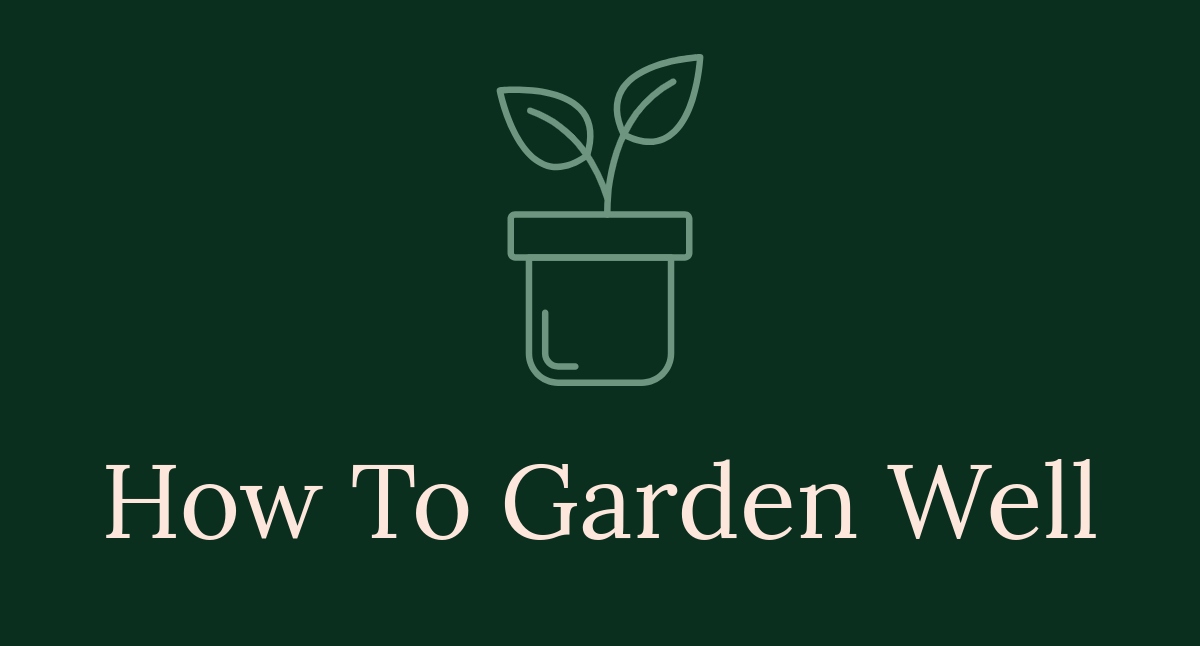

The Ultimate Guide to Succulent Plants: Care, Types, and Tips for Success
Introduction
Succulent plants are the cool kids of the gardening world. Their quirky shapes and vibrant colors can brighten up any space. Whether you have a green thumb or you’re more of a plant parent who’s occasionally forgetful, succulents are your perfect match. These charming plants are not only visually appealing but also wonderfully forgiving. If you miss a watering or two, they won’t hold a grudge. Instead, they’ll keep on thriving, waiting patiently for their chance to shine. Imagine a sunny windowsill adorned with an array of succulents. They come in all shapes and sizes, from the rosette wonders of Echeveria Succulent Plant to the dramatic spikes of Agave. Each variety has its own personality, making them delightful companions in your home. Plus, their low-maintenance nature means you can enjoy their beauty without a lot of fuss. Why are succulents so popular? Well, they’re not just pretty faces. These plants store water in their leaves, allowing them to survive in less-than-ideal conditions. This makes them perfect for busy individuals or those prone to watering mishaps. With minimal attention, you can cultivate a thriving succulent garden that adds a splash of life to your surroundings. In this ultimate guide, we’ll cover everything you need to know about succulents. From identifying different types to understanding their unique care requirements, we’ve got you covered. Get ready to learn how to select the right plants for your space and discover the joys of propagation. Whether you’re looking for the hardiest plant or tips for creating a stunning centerpiece, this guide will be your trusty companion. So, grab your watering can (or perhaps just a spritz bottle) and let’s jump into the fascinating world of succulent plants!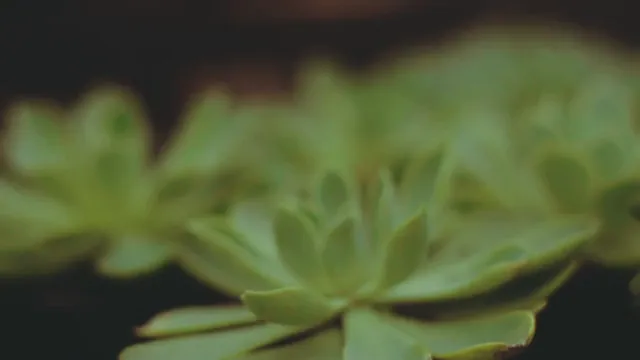
Summary of Key Points
Succulent plants are as diverse as they are beautiful, each variety offering unique charms and care needs. From the crowd-pleasing Echeveria to the curious Haworthia, there’s a succulent to suit every taste and environment. This guide will help you navigate the succulent universe with ease. You’ll learn how to choose the perfect succulent for your home, considering factors like light and water requirements. Understanding care basics is crucial for keeping your plants healthy. We’ll explore essential watering tips, ideal light conditions, and the best succulent potting mix. Plus, we’ll share creative ways to display your green friends, transforming your living space into a botanical wonderland. Are you already wondering which succulent is the toughest? Or how to make an eye-catching arrangement? Fear not! This guide is packed with insights and troubleshooting advice. You’ll be equipped to tackle common issues, ensuring your succulents flourish and bring endless joy to your life. So, buckle up! Your succulent adventure starts here.
Types of Succulent Plants
Succulents come in all shapes and sizes, each with its unique charm. Whether you’re a newbie or a seasoned plant parent, knowing the different types can help you choose the right ones for your collection. Let’s take a closer look at some popular and rare varieties.Popular Succulent Varieties
- Echeveria: These beauties have rosette shapes and vibrant colors. They thrive in bright light and need well-draining soil. Water them when the top inch of soil dries out. Echeveria are perfect for beginners since they’re low-maintenance and can tolerate occasional neglect. With their stunning colors, they’re great for adding a splash of personality to any space.
- Aloe: Aloe vera is the superstar of the succulent world. Not only is it easy to care for, but its leaves also boast incredible medicinal properties. They grow best in bright, indirect sunlight and prefer a little dryness between waterings. Aloe gel can treat minor burns and soothe skin irritations, making it a must-have in any home.
- Haworthia: If you’re looking for an ideal indoor succulent, consider Haworthia. These small, rosette-shaped plants come in various textures and colors. They thrive in low light, making them perfect for office spaces or dim corners in your home. Water them sparingly, allowing the soil to dry completely between waterings. Their unique appearance adds interest to any collection.
- Agave: Known for their striking, spiky leaves, Agave plants are real show-stoppers. They thrive outdoors in sunny spots and can grow quite large. These succulents are drought-resistant, making them perfect for xeriscaping. Just ensure they have plenty of space to grow and a well-draining soil mix.
Rare and Unique Succulents
- Lithops: Often called “living stones,” Lithops are fascinating little plants that mimic the appearance of pebbles. They enjoy bright light and need minimal watering. Just remember, these quirky plants go dormant in the summer, so don’t overwater them during that time. They’re perfect for plant lovers who enjoy a challenge!
- Pachyphytum: This group of succulents offers some of the most beautiful varieties. Their thick, plump leaves come in various colors, including soft blues and pinks. They prefer bright, indirect light and should be watered when the soil is dry. Pachyphytum are not just pretty; they also make excellent conversation starters.
- Crassula: With a wide range of species, Crassula plants are known for their unique features. The most popular is the jade plant, which is said to bring good luck. Crassula varieties thrive in bright light and need well-draining soil. Water them sparingly, and they’ll reward you with their charming looks for years to come.

Light Requirements
Succulents are like sun-loving divas. They thrive in bright, indirect light, but different varieties have their preferences. For instance, Echeveria and Aloe bask happily in direct sunlight, while Haworthia prefers a cozy spot with filtered light. Knowing these needs is crucial for keeping your plants perky. Position your succulents near south or west-facing windows. They’ll soak up that glorious sunshine! If you notice any stretching or leggy growth, they may be reaching for more light. Conversely, if the colors fade or the leaves start to drop, it could mean they’re getting too much sun. Adjust their placement accordingly, and watch them flourish!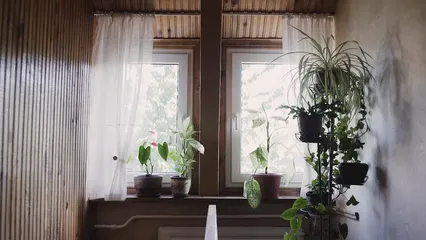
Soil and Potting
When it comes to soil, succulents are picky. They require well-draining soil to prevent root rot. A mix of potting soil and sand or perlite works wonders. You can also find pre-made succulent mixes at garden centers, which take the guesswork out of the equation. Choosing the right pot is equally important. Look for pots with drainage holes to allow excess water to escape. Terracotta pots are a popular choice since they absorb moisture and help prevent overwatering. Remember, happy roots lead to happy plants! If you want to get creative, check out some decorative succulent planters to enhance your display!
Fertilizing
Fertilizing succulents doesn’t have to be complicated. Generally, they need a light feeding during the growing season, which is spring and summer. Use a diluted, balanced fertilizer every 4-6 weeks for optimum growth. When applying fertilizer, always ensure the soil is dry to prevent root burn. During the fall and winter, cut back on feeding, as succulents go dormant. If your plants start looking a bit lackluster, consider adjusting your fertilization routine!Propagation Methods for Succulent Plants
Leaf and Stem Cuttings
Propagating succulents is like creating mini plant miracles! One of the easiest methods is through leaf and stem cuttings. Here’s a simple step-by-step guide to help you get started.- Choose a Healthy Plant: Pick a succulent that looks vibrant and healthy. This ensures your cuttings will thrive.
- Take Your Cuttings: For leaf propagation, gently twist off a healthy leaf. For stem cuttings, use clean scissors to snip a healthy stem about 2-4 inches long.
- Let Them Callous: Place the cuttings in a dry location for a few days. This allows the cut ends to callous over, reducing the risk of rot.
- Planting Time: Once calloused, place them on top of well-draining soil. Lightly mist the soil, but don’t soak it.
- Provide Indirect Light: Position your cuttings in a spot with bright, indirect light. Avoid direct sunlight until they establish roots.
- Water Sparingly: Wait until the soil dries out before watering. This encourages root growth without drowning your cuttings.
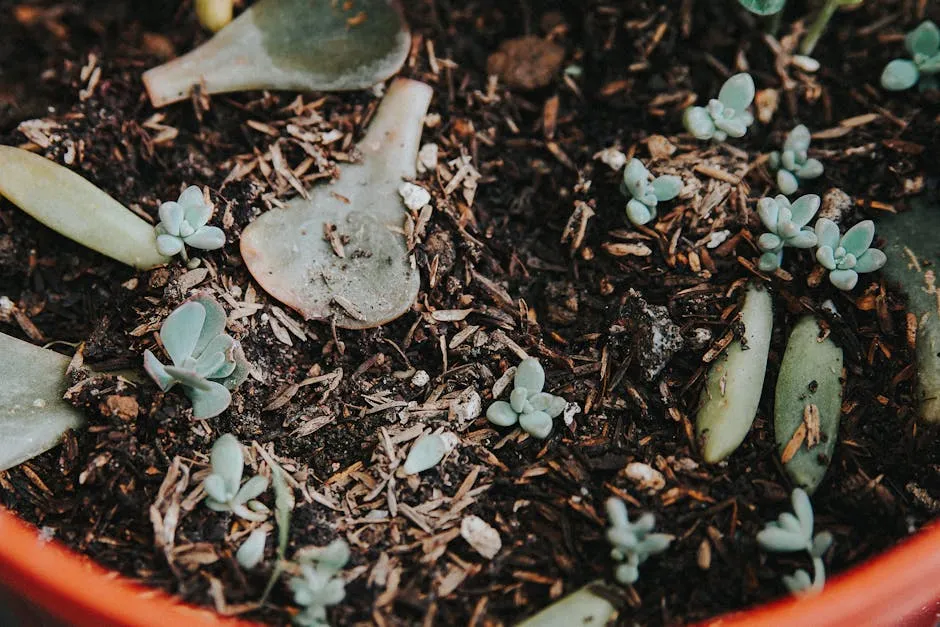
Creative Ways to Display Succulent Plants
Indoor Arrangements
Creating stunning indoor displays with succulents is a delightful way to enhance your living space. Start by selecting a variety of shapes and colors to keep things interesting. Mixing rosettes, tall spiky varieties, and trailing plants creates a dynamic visual appeal. Consider using different heights in your arrangements. Taller plants, like Aloe, can be placed at the back, while smaller varieties, like Haworthia, can sit in front. This layering technique adds depth and makes your display more engaging. When it comes to containers, the options are endless! Terracotta pots are a classic choice, allowing for excellent drainage. However, don’t shy away from experimenting with unique containers like vintage teacups, wooden crates, or even glass jars. These quirky choices can add character and charm to your space.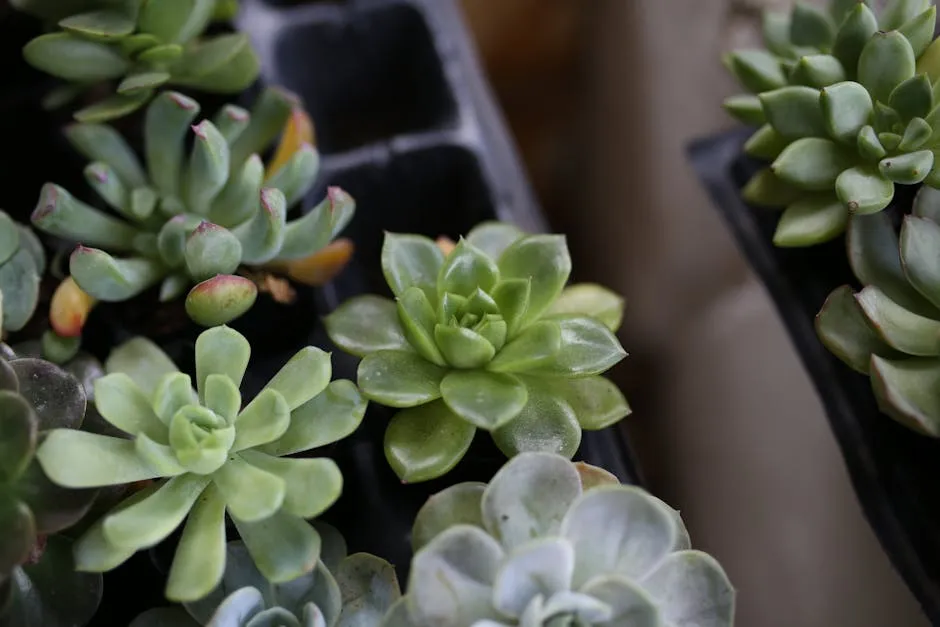
Outdoor Succulent Gardens
Designing an outdoor succulent garden can be a rewarding project. Start by surveying your backyard or balcony to determine the best sunlight exposure. Most succulents love full sun, so choose a spot that receives at least six hours of sunlight daily. When planning your garden layout, consider using a mix of colors and textures. Combine bold, spiky Agave with trailing varieties like Sedum for a visually striking effect. Create focal points with larger plants surrounded by smaller ones, ensuring a balanced appearance.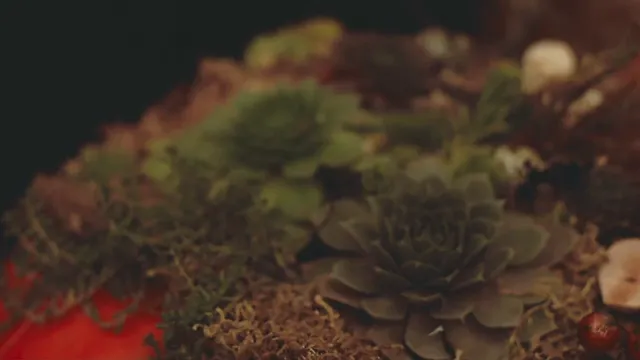
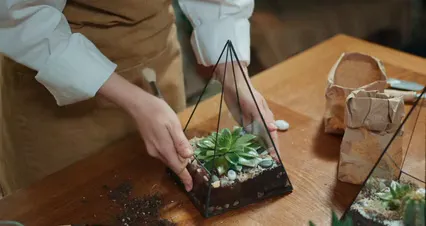
DIY Projects
DIY succulent projects are a fantastic way to personalize your space while having fun. One popular idea is creating terrariums. Start with a glass container, layer small rocks for drainage, followed by charcoal to keep the environment fresh. Then, add potting soil and your favorite small succulents. You might want to grab a succulent terrarium kit to get started! Terrariums can be styled in various ways. Add decorative elements like tiny figurines, colored sand, or pebbles to reflect your personality. Just make sure to keep the terrarium in indirect light to prevent overheating.

Troubleshooting Common Issues
Pests and Diseases
Succulent plants, like any green companion, can face a few foes. Pests such as spider mites and mealybugs are notorious for invading these beauties. Spider mites are tiny, almost invisible, and can cause leaves to appear speckled or dusty. Meanwhile, mealybugs resemble small cotton balls and love to hide in the nooks of succulent leaves. Identifying these pests early is key. If you spot webbing or sticky residue, it’s time to take action! Natural remedies can save the day. You can use a mixture of water and mild dish soap to wash them away. Just spray your plants, let it sit for a few hours, then rinse well. For a stronger approach, consider organic neem oil pesticide, a natural pesticide that’s effective and plant-friendly. But don’t stop there! Regularly inspecting your succulents can help you catch these pests before they turn into a full-blown infestation. Prevention is always better than treatment!
Environmental Stress
Sometimes your succulent may show signs of distress, like stretching or color changes. If your plant is reaching for the light, it might need a brighter spot. Succulents naturally grow in bright environments, so be sure to position them near a sunny window. However, if you notice leaves turning pale or yellow, they could be getting too much sunlight. Seasonal changes can also affect your succulent’s well-being. In winter, they may require less water, as they enter a dormant phase. Adjusting your watering schedule based on the season ensures your plants stay healthy. During warmer months, you might need to water more frequently, especially if they’re outside basking in the sun. So, if your succulent looks a little sad or out of sorts, don’t panic! Just check its light and water needs, adjust accordingly, and give it some TLC. With a bit of care, your succulent will bounce back, ready to brighten your space once more. You might also find a soil moisture meter helpful!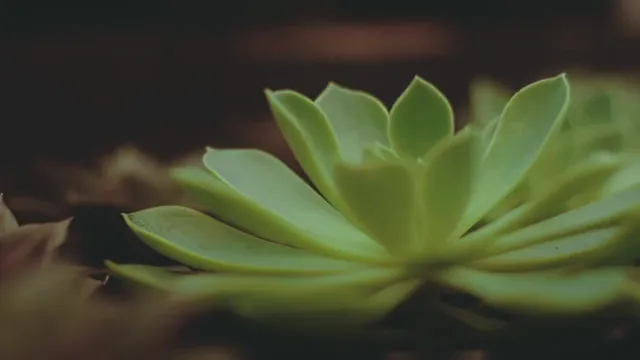
Conclusion
Succulent plants are not just low-maintenance housemates; they are living art pieces that bring beauty and life into your space. By understanding their care requirements and exploring the vast variety of succulents available, you can create a thriving garden that reflects your personal style. Whether you’re seeking a pop of color for your windowsill or looking to create an outdoor succulent paradise, this guide serves as your go-to resource. Embrace the succulent craze, and let these charming plants bring joy and character into your life! With a little knowledge and a sprinkle of love, you’ll transform your space into a succulent sanctuary. Remember, every plant has its quirks, and learning how to care for them is part of the fun. Enjoy the journey of succulent ownership, and watch your green friends flourish!
FAQs
How often should I water my succulents?
Watering depends on your environment. Generally, it’s best to water when the top inch of soil dries out.
Do succulents need direct sunlight?
Yes, most succulents thrive in bright, indirect light. Some love full sun, while others prefer a bit of shade.
Can I keep succulents in my office?
Absolutely! Succulents are perfect for offices as they require minimal care and add a touch of greenery.
What is the best pot for succulent plants?
Choose pots with drainage holes. Terracotta is ideal as it allows air circulation and moisture control.
How do I propagate succulents successfully?
You can propagate through leaf or stem cuttings. Allow cuttings to callous before planting them in well-draining soil.
Please let us know what you think about our content by leaving a comment down below!
Thank you for reading till here 🙂
All images from Pexels
